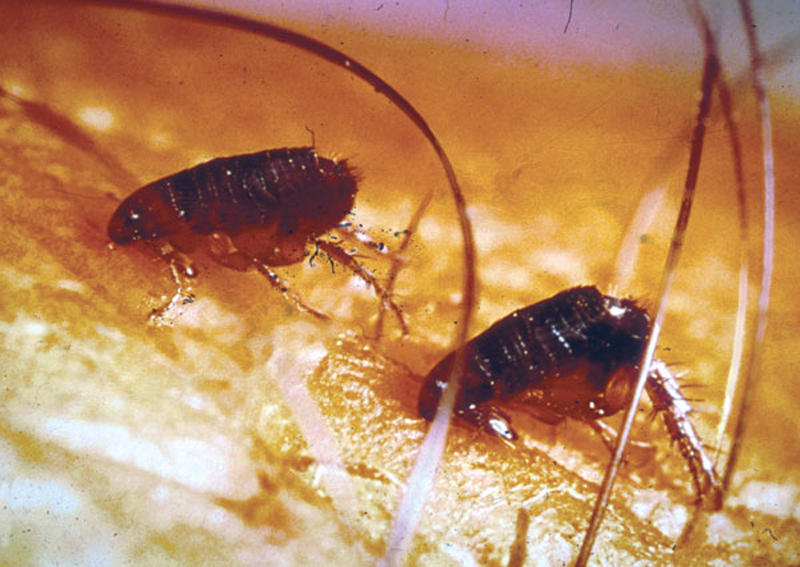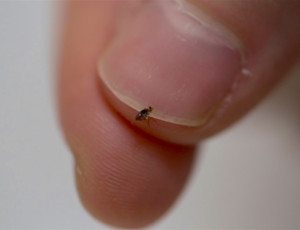Flea Treatments in Florida:
Exterminator Services for Boca Raton, Deerfield Beach, and Delray Beach
Florida’s warm, subtropical climate is famous for its abundance of sunshine, scenic beaches, and near-constant opportunities for outdoor activities. Yet these same conditions can inadvertently foster a range of pest problems, including fleas. These tiny, jumping parasites feed on the blood of animals and sometimes humans, causing discomfort, itching, and even transmitting diseases. For residents in Boca Raton and nearby communities like Deerfield Beach and Delray Beach, encountering a few fleas may quickly escalate into a full-blown infestation if not promptly addressed. This service page takes a closer look at why fleas thrive in Florida, how to identify and handle them, and what a professional flea exterminator does to help homeowners restore a healthier, more peaceful indoor and outdoor environment.
Why Fleas Flourish in Florida

- Mild Winters
In cooler parts of the country, freezing temperatures naturally limit flea populations by halting their reproduction cycle. In Florida, cold spells are short and rarely dip below freezing for an extended period. As a result, fleas experience only minimal interruptions to their breeding and feeding patterns, often remaining active all year. - High Humidity and Rainfall
Fleas need moisture to develop successfully through their life stages—egg, larva, pupa, and adult. Florida’s steady humidity and frequent showers provide fleas with just the right amount of dampness, especially in shaded yard areas with leaf litter or tall grass. When these sites stay moist, flea larvae thrive in the soil or debris, waiting to hop onto passing animals or unsuspecting humans. - Abundant Wildlife
Florida’s diverse ecosystems support countless wild and domestic animals—feral cats, raccoons, squirrels, and more. These animals carry fleas as they roam, sometimes depositing them onto lawns, under porches, or near feeding stations. In suburban or developed areas, fleas can hitch a ride on pets that spend any time outdoors, bringing the infestation inside your house. - Minimal Seasonal Dormancy
Some flea species can slow their activity under extremely cold or dry conditions. In Florida, these conditions rarely last long. If fleas find a steady blood source—like a pet or even a roving wildlife creature—they can remain active, breeding and spreading eggs in a continuous cycle. - Frequent Pet Ownership
Communities like Boca Raton, Deerfield Beach, and Delray Beach are known for pet-friendly lifestyles. Unfortunately, pets offer fleas prime opportunities to feed and relocate. Even well-groomed animals can become flea taxis if they go for walks in infested yards or come into contact with other animals that carry fleas.
Recognizing Flea Infestations
- Excessive Scratching or Biting in Pets
Dogs or cats that suddenly begin compulsively scratching, chewing their fur, or developing red patches on their skin may be dealing with fleas. Flea saliva can irritate pets’ skin, causing discomfort and potential allergies. Observing restless animals that frequently scratch themselves often signals a flea population in or around the home. - Visible Fleas on Fur or Skin
Adult fleas are quite small (one to three millimeters) but can be seen moving swiftly over an animal’s coat. Using a flea comb or parting the fur might reveal dark, fast-moving specks. Some fleas jump away quickly when discovered, making them tricky to trap without a systematic approach. - Flea Dirt
Also referred to as flea feces, this substance looks like coarse black pepper and might appear on pets’ bedding, carpets, or the floor where animals rest. Flea dirt is digested blood—when moistened on a white paper towel, it dissolves into a reddish-brown stain, confirming its origin. - Bites on Humans
Fleas sometimes bite people, particularly around the ankles and lower legs. These bites look like small, itchy red bumps, often arranged in clusters or lines. If family members notice a pattern of bites or welts, especially in the morning, fleas might be lurking in carpet fibers, sofa cushions, or bedding. - Larvae or Pupae in Hidden Areas
While less frequently seen, you might find tiny, whitish larvae in dark, humid corners like under furniture or around baseboards. Pupae remain cocooned and can hatch into adults when they sense vibrations. Without thorough cleaning or vacuuming, pupae may stay dormant for weeks, re-emerging later to re-infest a seemingly treated home.
Consequences of an Untreated Flea Problem
- Pet Health Complications
Repeated flea bites can cause anemia in pets, especially small dogs or cats, and transmit tapeworms. If a pet experiences severe flea allergy dermatitis, hair loss, and hot spots, the situation can escalate into veterinary bills and discomfort for the animal. - Human Discomfort
Though fleas prefer animal hosts, they readily bite humans if no other options present themselves. Frequent bites lead to ongoing itching, and in rare cases, fleas can transfer diseases. Living under constant threat of bites disrupts daily routines and peace of mind. - Rapid Infestation Growth
Fleas breed quickly—one female lays numerous eggs, which can fall off your pet and lodge in carpets or yard debris. Before long, newly hatched fleas may be hopping on pets, furniture, or human ankles. A minor incursion can intensify significantly in just a few weeks if left unaddressed. - Difficulty in Eradication
The longer fleas remain, the more time they have to spread eggs throughout a property. Spotting a full-blown infestation requires more intense treatments and can be costlier in terms of time and effort. Early detection and swift response minimize the challenge.

How Flea Exterminator Services Work
- Inspection and Assessment
A skilled flea exterminator starts by examining your house and yard, focusing on pet resting spots, shaded lawn areas, and carpeted rooms. Identifying where fleas congregate—both adults and larvae—helps shape a targeted plan. - Interior Treatments
Key steps for indoor control include:
- Vacuuming: Pulling up flea dirt, eggs, and larvae from rugs, furniture, or other surfaces. Disposing of vacuum bags or contents securely prevents re-infestation.
- Residual Sprays: Applying insect growth regulators and contact insecticides around baseboards or hidden cracks ensures that fleas or larvae that remain can be killed or prevented from maturing.
- Steam Cleaning: In certain spots, high-temperature steam can instantly kill fleas, eggs, and larvae. This is especially helpful for severe, localized infestations.
- Outdoor Yard Management
Many fleas start outdoors, jumping onto pets or people from grass and mulch. Steps for yard control include:
- Lawn Maintenance: Mowing grass short and removing leaf piles deprives fleas of shady, moist hiding spots.
- Targeted Treatments: Using products formulated to disrupt flea life cycles in shady, humid corners of the yard, such as under decks or near pet runs.
- Landscape Adjustments: Trimming bushes or ensuring proper drainage so that fewer damp areas remain conducive to flea breeding.
- Pet and Veterinary Coordination
Although a pest control professional addresses the environment, pet owners must treat animals themselves. Veterinary advice on flea preventatives—like topical applications, oral chews, or collars—works in tandem with property treatments. If a pet remains untreated, they can bring fleas back indoors, undermining even the best extermination efforts. - Follow-Up Visits and Monitoring
Flea eggs and pupae can survive initial treatments, hatching later if not captured by second or third sweeps. A reputable exterminator may recommend periodic checks to ensure no fresh outbreak emerges. If any fleas or newly hatched insects appear, re-treatment ensures their numbers stay low and eventually disappear.
Service Areas: Boca Raton, Deerfield Beach, and Delray Beach
We offer comprehensive flea treatments in Boca Raton, Deerfield Beach, and Delray Beach. Each locale features warm temperatures and thriving suburban neighborhoods, making fleas a year-round possibility rather than a strictly seasonal nuisance. If you live near parks, forest edges, or water channels, or if you enjoy plenty of outdoor time, your home might be particularly at risk for fleas carried by pets or local wildlife.
- Boca Raton: With its upscale communities and high level of pet ownership, fleas can multiply quickly if yard spaces or common areas are left unmanaged.
- Deerfield Beach: Coastal humidity and frequent travel visitors can introduce fleas to condos or rental properties if occupants or guests do not notice the early signs.
- Delray Beach: Known for its vibrant downtown, Delray Beach also supports a variety of wildlife outside the city center. If yards are lush, fleas may find the shade and moisture they need to thrive.

Why Partner with a Flea Exterminator
- Local Expertise
Fleas in Florida remain active almost all year, requiring specialized approaches that accommodate Florida’s mild winters and high humidity. An exterminator familiar with the local ecology can pinpoint hot zones—like under porches or near air conditioning units—and apply methods proven effective in this region. - Safe, Strategic Control
Rather than blanket-spraying the entire property, professionals target specific areas where fleas hide or reproduce. This selective method reduces chemical use while maximizing the impact on fleas and limiting potential risks to pets or humans. - Thorough Guidance
Effective flea control extends beyond a single treatment. A competent extermination service educates owners on yard modifications, vacuuming techniques, and the importance of consistent pet flea prevention. This advice helps prevent fleas from reappearing weeks after initial removal. - Integration with Pet Care
Treating fleas in the environment alone is rarely sufficient if animals bring them back. Reputable exterminators encourage close collaboration with veterinarians, ensuring your dog or cat receives appropriate flea preventives—topicals, pills, or collars that match your pet’s lifestyle and health requirements. - Follow-Up and Assurance
Because fleas pass through egg, larva, pupa, and adult stages, skipping even a minor pocket of pupae could mean a resurgence later. Scheduling a follow-up check ensures that newly emerged fleas face immediate eradication.
Next Steps
If you see pets scratching frequently, spot bites on your ankles, or discover small, dark specs of “flea dirt” in bedding, it is time to act. Contact us to learn more or schedule your service. Our flea exterminator approach addresses adult fleas, immature stages hidden in carpet fibers or soil, and the conditions that support ongoing infestations.
Timely intervention means reduced discomfort for people and pets alike, fewer risks of illness, and a cleaner, more welcoming home. By combining in-home control with yard modifications—alongside proper pet treatments—you can disrupt the flea life cycle and protect your household from these persistent pests.
Sustaining a Flea-Free Environment in Florida
Living in a beautiful coastal region like Boca Raton, Deerfield Beach, or Delray Beach inevitably comes with subtropical challenges. Fleas are only one of several pests that thrive in the state’s mild, humid conditions. Consistent vigilance and proactive measures—both indoors and outdoors—play key roles in maintaining a comfortable space. That means scheduling routine yard upkeep, vacuuming thoroughly, washing pet bedding regularly, and monitoring areas where pets spend the most time.
With a specialized extermination plan and clear follow-up procedures, fleas can be eliminated effectively—even in a climate that rarely slows them down. By cooperating with an experienced pest control service and sticking to your veterinarian’s advice for flea preventives, you can keep your property safe from renewed infestations. This approach preserves your peace of mind, sparing you the persistent annoyance, potential bites, and health issues fleas can bring.
When fleas are finally under control, your pets will rest more comfortably, your family can enjoy Florida’s warm, inviting weather without worry, and your home will reclaim the tranquility that fleas so often disrupt. Ultimately, consistent treatments, a well-maintained environment, and reliable collaboration with professionals form the best defense against flea troubles in Florida’s year-round sunshine.
